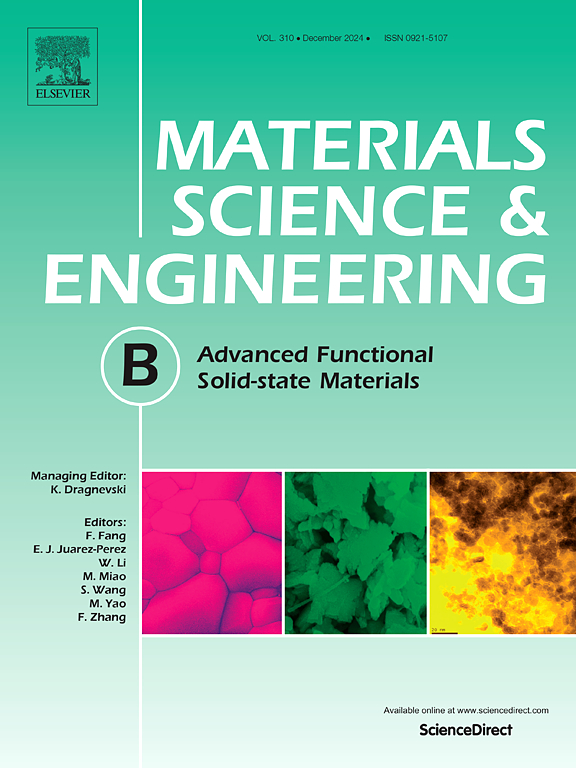用钛酸锂镧-石墨烯改性隔膜重新定义锂硫电池的性能
IF 4.6
3区 材料科学
Q2 MATERIALS SCIENCE, MULTIDISCIPLINARY
引用次数: 0
摘要
为了抑制锂硫电池(LSBs)中锂多硫化物(LPSs)的溶解和相关的穿梭效应,我们用钛酸锂镧-石墨烯纳米片(LLTO-G)功能化了celgard分离器,它具有固定LPSs的能力和加速催化转化动力学。采用固态法-超声法合成了LLTO-G复合材料。在电解硫比为6 ~ 8 μL/mg的条件下,电池在0.1℃条件下的初始放电容量为1216 mAh/g,循环100次后容量保持69%。在含硫量为3mg /cm2 (0.5 C)的条件下,研究了200次循环的可循环性,其初始放电容量为741 mAh/g。此外,该器件具有稳定的穿梭电流、增强的锂离子扩散、低库仑效率损失和最小的自放电等特点。电化学结果表明,功能化分离器设计是开发高性能lbs的可行策略。本文章由计算机程序翻译,如有差异,请以英文原文为准。

Redefining the lithium-sulphur battery performance with a lithium lanthanum titanate-graphene modified separator
To suppress the lithium polysulfides (LPSs) dissolution and associated shuttle effect in Lithium-Sulfur Batteries (LSBs), we have functionalized the celgard separator with lithium lanthanum titanate-graphene nanoplatelets (LLTO-G), which offer LPSs immobilization capability and accelerated catalytic conversion kinetics. The LLTO-G composite was synthesized by solid-state route followed by ultrasonication. The assembled cell, optimized with an electrolyte-to-sulfur (E/S) ratio of 6–8 μL/mg demonstrated an initial discharge capacity of 1216 mAh/g at 0.1 C rate, retaining a capacity of 69 % after 100 cycles. Cyclability was investigated at a sulfur loading of 3 mg/cm2 (0.5 C rate) over 200 cycles, resulting in an initial discharge capacity of 741 mAh/g. Furthermore, the device shows stable shuttle current, enhanced Li-ion diffusion, low coulombic efficiency loss, and minimal self-discharge. The electrochemical outcomes showcase the functionalized separator design as a viable strategy for developing high-performance LSBs.
求助全文
通过发布文献求助,成功后即可免费获取论文全文。
去求助
来源期刊

Materials Science and Engineering: B
工程技术-材料科学:综合
CiteScore
5.60
自引率
2.80%
发文量
481
审稿时长
3.5 months
期刊介绍:
The journal provides an international medium for the publication of theoretical and experimental studies and reviews related to the electronic, electrochemical, ionic, magnetic, optical, and biosensing properties of solid state materials in bulk, thin film and particulate forms. Papers dealing with synthesis, processing, characterization, structure, physical properties and computational aspects of nano-crystalline, crystalline, amorphous and glassy forms of ceramics, semiconductors, layered insertion compounds, low-dimensional compounds and systems, fast-ion conductors, polymers and dielectrics are viewed as suitable for publication. Articles focused on nano-structured aspects of these advanced solid-state materials will also be considered suitable.
 求助内容:
求助内容: 应助结果提醒方式:
应助结果提醒方式:


